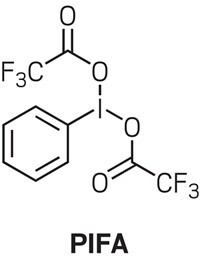Advertisement
Grab your lab coat. Let's get started
Welcome!
Welcome!
Create an account below to get 6 C&EN articles per month, receive newsletters and more - all free.
It seems this is your first time logging in online. Please enter the following information to continue.
As an ACS member you automatically get access to this site. All we need is few more details to create your reading experience.
Not you? Sign in with a different account.
Not you? Sign in with a different account.
ERROR 1
ERROR 1
ERROR 2
ERROR 2
ERROR 2
ERROR 2
ERROR 2
Password and Confirm password must match.
If you have an ACS member number, please enter it here so we can link this account to your membership. (optional)
ERROR 2
ACS values your privacy. By submitting your information, you are gaining access to C&EN and subscribing to our weekly newsletter. We use the information you provide to make your reading experience better, and we will never sell your data to third party members.
Environment
Thoughts on Rachel Carson
July 16, 2007
| A version of this story appeared in
Volume 85, Issue 29
Rudy Baum's editorial on Rachel Carson (C&EN, June 4, page 5) brought back memories of a public meeting held by the School of Agriculture at Cornell University when "Silent Spring" was published in 1962. I was a beginning grad student in chemistry at the time and very na??ve about research funding and entrenched interests.
Not one of the "distinguished" professors who discussed the book supported anything in it. I clearly remember one attacking Carson's credibility mainly because she was unmarried, or as he called her, a "maiden lady."
I was shocked and puzzled at this display of sexism and unscientific behavior and could not understand at the time why they were attacking her so intensely. Now I realize that they worried about their own research and funding and used every means at their disposal to protect themselves.
My naíveté was gone on that day.
Harvey F. Carroll
Lake Forest Park, Wash.
Having lived through the years that prompted Carson to write "Silent Spring," I'm aware those times demanded a polemic approach to bring the public's attention to the problems that overuse and abuse of DDT was causing, aided and abetted by the chemical community. I recall reading Carson's book and being impressed by her disclosure of the reckless abandon with which DDT was being used and the environmental damage it was causing.
"Silent Spring" succeeded in its intended purpose: Drawing these problems to our largely unconcerned attention. Unfortunately, the legislative reaction that it evoked was too extreme. Instead of enacting prudent legislative measures to properly regulate use of DDT, politicians opted to ban DDT completely. Other industrialized nations soon followed our lead. Together, they used their combined economic power to force the world's underdeveloped equatorial nations to discontinue its use, even though they were in desperate need of DDT. DDT had brought malaria deaths far below previous historic lows, but when its use was discontinued, those deaths rose sharply, soaring into the millions.
Certainly, Carson did not cause these deaths and she is not a "mass murderer." "Silent Spring" called the world's attention to the crying need to regulate DDT's use. She deserves great credit for this and shouldn't be blamed for our politicians' gross overreaction to the problems that she so eloquently pointed out.
Rachel Carson is a true American hero. She was unjustly maligned by the chemical community and is now being denied appropriate recognition by a small group of zealots in Congress who call her a "mass murderer." What an ironic fate for a wonderfully courageous and gifted woman.
Frank J. Dinan
Tonawanda, N.Y.
Clearly, Baum admires Carson's prose style and moral outrage about unrestrained application of pesticides, especially DDT. He dismisses "Sen. Tom Coburn and his ilk" because they find her less admirable. He says they claim banning DDT has resulted in about 90 million preventable deaths from malaria, and that they believe DDT is perfectly safe. He also says that resistance among mosquitoes was already widespread in 1962. What is true here?
The World Health Organization estimates 500 million cases of malaria annually, with 1.2 million deaths. The 1998 estimate was 2.7 million deaths. Since malaria's weakened victims often succumb to other infections, the death toll is likely higher. DDT spraying was stopped in 1964, so an estimate of 90 million preventable deaths seems reasonable. After all, DDT reduced malaria cases in Sri Lanka from 2.8 million in 1948 to 20 in 1963. Today's pyrethroids are less effective and at least three times as expensive. Moreover, malaria's debilitating effects cause poverty and starvation. Regions suffering extreme poverty and those with high malaria rates virtually coincide on global maps.
No insecticide is perfectly safe, but DDT was dusted over untold thousands of concentration camp inmates and POWs after WWII to kill lice and ticks without causing apparent harm. Women who may become pregnant should avoid excessive exposure. Some birds are susceptible, and both DDT and its metabolite DDE are persistent. But 500 g of DDT twice a year protects a house versus more than 1,000 kg per application to 100 hectares of cotton. Insecticide resistance can occur, but DDT was remarkably effective worldwide for at least 20 years. Later in KwaZulu-Natal, South Africa, it reduced malaria from 6,500 cases in 2000 to 2,000 cases one year later.
Carson felt that moderate negative impacts on nature outweighed extensive human poverty, starvation, and death. She merits both praise and blame.
Elliott Doane
Oklahoma City



Join the conversation
Contact the reporter
Submit a Letter to the Editor for publication
Engage with us on Twitter